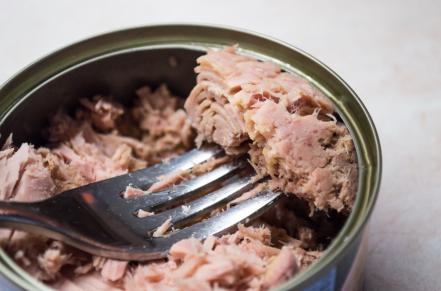Food-borne illnesses are wide-spread and making headlines. Because a small dose of infectious or toxic materials can lead to serious illnesses among children, food safety is an increasingly important issue for parents and caregivers, particularly those looking after young children.
What is a food-borne illness?
Food-borne illness is a disease caused by ingesting food or drink contaminated by microbes, chemicals or toxins. Every person is at risk of food-borne illness, but young children, pregnant women, elderly people, persons with liver disease, and those with weakened immune systems are at a higher risk.
How does food become contaminated?
We live in a microbial world with many opportunities for food to become contaminated as it is produced, processed, stored and prepared. Bacteria may already be present on products such as raw meat, poultry, seafood and eggs when you purchase them. Even safely cooked foods can become cross-contaminated with raw products, meat juices or other contaminated products.
Common food handling practices that contribute to food-borne illnesses include improper cooling, a lapse of 12 or more hours between preparation and eating, handling of foods by infected persons, inadequate reheating, contaminated raw food or ingredients, food from unsafe sources, improper cleaning of equipment and utensils, and inadequate cooking.
What causes food-borne illnesses?
While a good number of more than 250 different recognized food-borne diseases are caused by a variety of bacteria, viruses and parasites, others are caused by harmful toxins or chemicals that have contaminated the food.
Foods most often implicated in food-borne illness outbreaks include:
- meat and poultry
- eggs and egg products
- milk and milk products (including pastries with cream or custard filling)
- home-canned and low-acid foods such as vegetables and meats.
What are the symptoms?
It may take from hours to days to develop symptoms of illness after a person has consumed contaminated food or drinks. This period is called the incubation period. Usually the first symptoms in many food-borne diseases may include:
- nausea
- vomiting
- abdominal cramps
- diarrhea
However, symptoms will vary according to the type and amount of microbes and may include:
- fever
- headache
- severe exhaustion
- sometimes blood and pus in the stools
Symptoms usually last a day or two, but in some cases can continue for a week to 10 days. Different kinds of food-borne diseases may require different treatment depending on the symptoms they cause. Many food-borne illnesses will improve in 2-3 days without any medicine, and illnesses caused by viruses do not require antibiotics.
When should you seek medical help?
Seek medical help if:
- Diarrhea lasts more than three days.
- Vomiting lasts longer than 12 hours.
- There is blood in the stool.
- High fever (temperature that is over 101.5º F measured orally) is present.
- Vomiting and diarrhea are causing severe abdominal cramps.
- Signs of dehydration (such as dry mouth, decrease in urination, and feeling dizzy when standing up) are present.
How can I avoid food-borne illnesses?
Food safety involves proper food purchasing, food storage, handling and cooking. A few simple precautions can prevent food from spreading illnesses:
- Clean. Wash hands and surfaces often.
- Separate. Do not cross-contaminate.
- Chill. Refrigerate promptly.
- Cook. Cook to proper temperatures.
Remember that bacteria multiply rapidly between 40º F and 140º F. To be safe, keep cold food cold and hot food hot.
References:
Foodborne Infections, Division of Bacterial and Mycotic Diseases, CDC.
Consumer Fact Sheet, FDA Center for Food Safety and Applied Nutrition.
Food Safety for Child Care Facilities, University of Nebraska, Institute of Agriculture and Natural Resources.
Child Care Centers Fight Bacteria, USDA, Food and Nutrition Services







